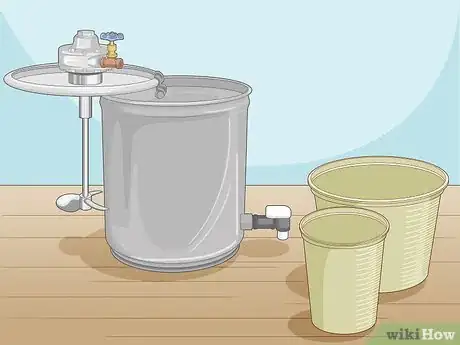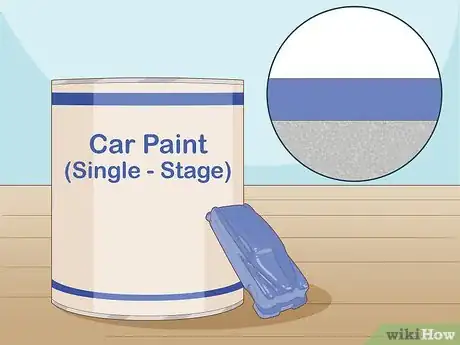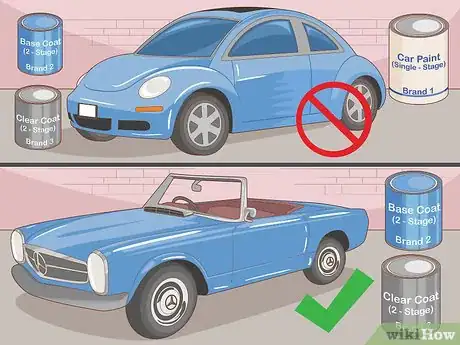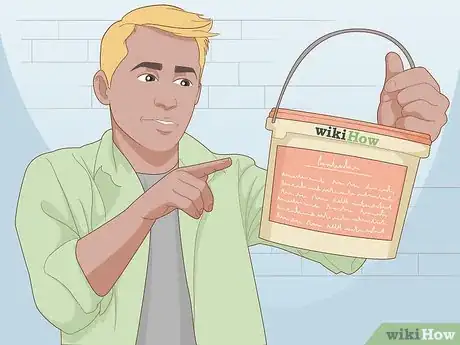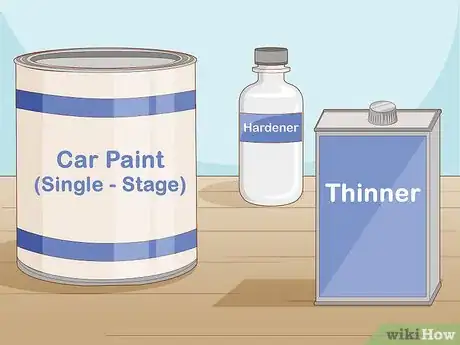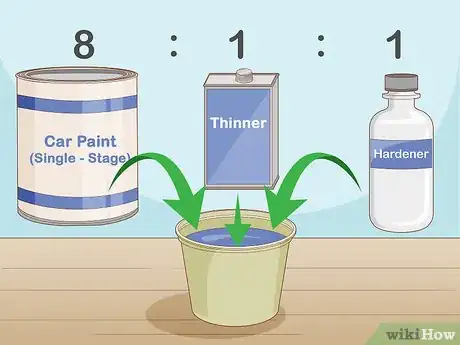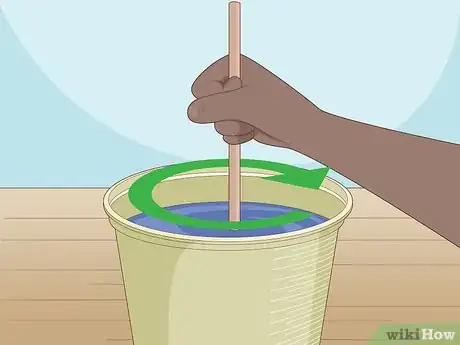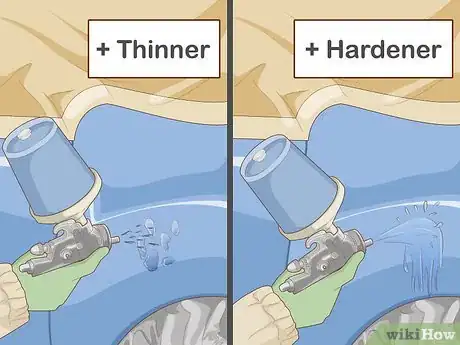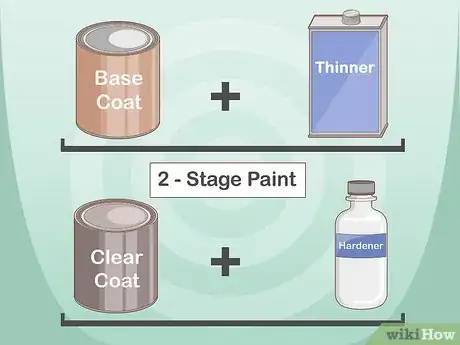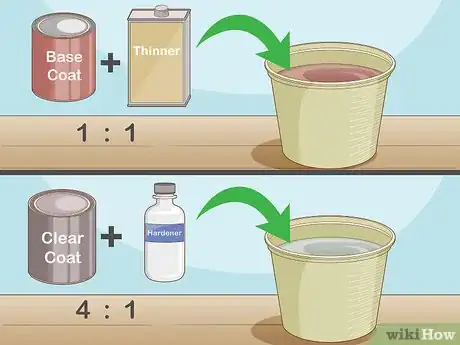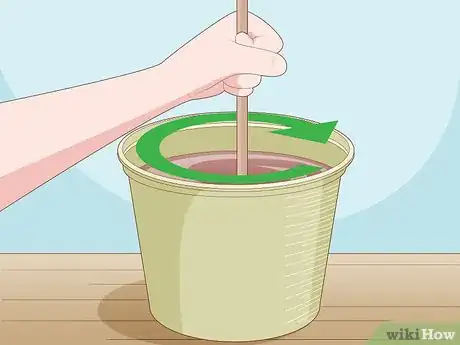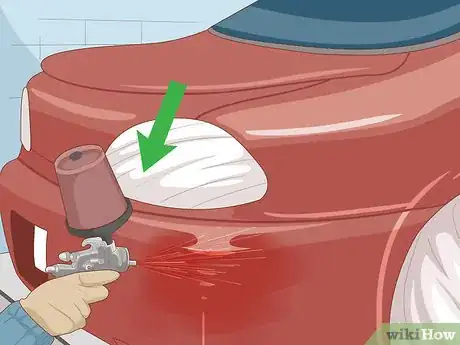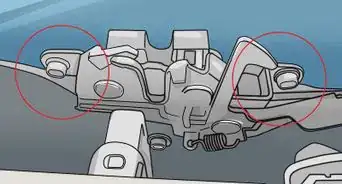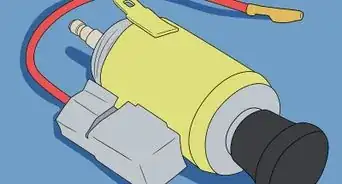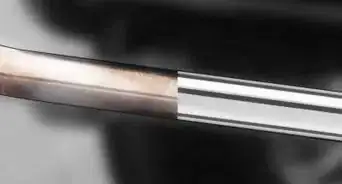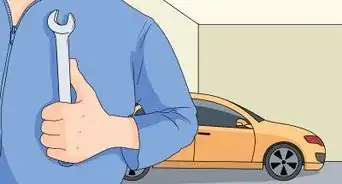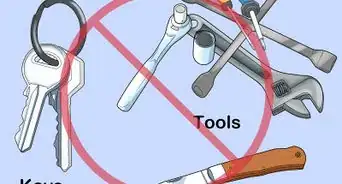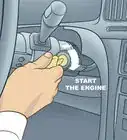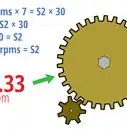This article was co-authored by wikiHow Staff. Our trained team of editors and researchers validate articles for accuracy and comprehensiveness. wikiHow's Content Management Team carefully monitors the work from our editorial staff to ensure that each article is backed by trusted research and meets our high quality standards.
This article has been viewed 73,421 times.
Learn more...
Many auto body and repair shops can re-paint your vehicle, but will charge heavily for the service. If you want a smart new look for your car, but don't want to leave a hole in your wallet, painting it yourself could be a good option. This will require some knowledge of the various automotive paint types and mixing methods. But, having grasped the basics, that slick new coat of paint won't be too far away.
Things You Should Know
- Collect a mixing pail and purchase enough single-stage or two-stage paint to cover your entire car.
- Read your single-stage paint's label to determine what measurements you should pour into your pail and then, mix and test your paint.
- For two-stage paint, mix base coat with thinner in one pale and clear coat with hardener in another, mix both compounds together, and finally, test your paint.
Steps
Getting the Right Supplies
-
1Purchase a mixing pail or cup. It is well worth your while purchasing a container made specifically for mixing automotive paint. Not only will these better endure the repeated use of harsh chemicals, but also come with side-markings which will be invaluable when it comes time to measure your paint.[1]
-
2Choose single-stage paint if you're looking for a quick and cheap option. Selecting the paint you will work with is more than simply choosing a pleasant colour. Different kinds of paint do different jobs.Single-stage paints are those which can be used independently, without an extra base or finishing layer. A good comparison is to nail polish. You can apply as many or as few layers as you wish, with nothing else being required.[2]
- Single-stage paints are recommended for basic colours such as red, blue, or yellow. They dry to a glossy finish and are easy to prepare, so are perfect for the novice painter. Note, however, that these are rarely used to coat an entire car.[3]
Advertisement -
3Choose a two-stage paint method if you want a longer-lasting result. Two-stage or base coat/clear coat paints will involve at least two coats (one base, one clear). The base coat provides the colour, while the clear coat provides extra protection against scratches and the elements.[4]
- A two-stage method tends to yield a more metallic finish. If this, along with greater protection, appeals to you, then opt for a compound coat.
-
4Be consistent when mixing your paint. Whatever you choose, try not to vary your paint types or brands, as this can create an uneven result. If you don't know which paint or method is best suited to your vehicle, consult your owner's manual or local car dealer to find out.[5]
-
5Find your paint's technical information. When mixing paint, you need to know what additional materials are required, as well as any safety precautions to take into consideration. However, this information is not difficult to find. Simply inspect the side of the can.[6]
- If the technical data specifies the use of paint thinner and/or paint hardener, these will need to be purchased as well.
- In the unlikely event that this information is not printed on the can, go to the manufacturer's website or contact the retail outlet where the paint was bought.[7]
Mixing Single-Stage Paints
-
1Gather your paint and other required materials. Single-stage paint will usually require the mixture of three basic substances.
- The paint itself will determine the colour of your mixture.
- 'Reducer' or 'thinner' serves to dilute the paint, avoiding solid clumps or "orange peels" in your coat.
- 'Hardener' will help your paint dry for a convenient finish.[8]
-
2Pour your materials into a mixing container. The paint's technical information will inform you of what ratio of materials are needed, written as a series of 3 numbers. For example, a standard mixing ratio for single-stage paints is an 8/1/1 mixture. That is to say, for every 8 parts paint add one part thinner and one part hardener.[9]
- If you are using a paint mixing cup there will be fractions which correspond to this ratio. So, you might fill the cup with paint to the '8' level, use thinner to reach '9,' and top it up to '10' with hardener.[10]
-
3Stir the paint well. Paint sticks can be acquired from any trade store, otherwise a sturdy piece of wood or old tool will suffice to stir the mixture. Do so thoroughly to create the appropriate consistency.[11]
- Whatever you use to mix the paint with will be ruined, so choose something that will not be missed.
-
4Test the paint with a spray gun. Add a small amount of the paint to the gun, and have a disposable surface set aside to test the suitability of your newly mixed paint.
- If the paint is not flowing well from the spray gun, add more thinner to increase the flow.
- If having sprayed the surface you see that the paint is running, or is having trouble drying, this is an indication that more hardener is required.[12]
Mixing Two-Stage Paints
-
1Gather the different paints and their additional materials. Both the base coat paint and clear coat paint will require pairing with an additional substance.
- Base coat paint will be paired with reducer or thinner to ensure the best viscosity.
- Clear coat paint must be combined with hardener before being applied to your car's surface.[13]
-
2Combine your materials in a mixing container. Refer to the technical information you sourced earlier to determine the ratios for each coat.
- The ratio of base coat paint to reducer will always be 1/1. Your container, preferably a mixing pail, should therefore be half paint and half thinner.
- Your clear coat will be slightly more complicated. Depending on the brand, the ratio of clear coat paint to hardener will usually be either 4/1 or 2/1.[14]
-
3Mix your compounds thoroughly. Using a paint stick or similar tool, stir the contents until they appear smooth. Don't worry about getting the consistency exactly right first time, you will have a chance to test the texture before painting your car, and to stir further if necessary.
-
4Spray a test coat on a safe surface. Place a small sample of both coats into your spray gun and apply on something dispensable - a wooden board or old piece of equipment would be best. Your base coat should be checked for viscosity as this will contribute most to the colour of the vehicle. The clear coat, while colourless, generates that much coveted gloss or shine. Both ought to flow smoothly from the gun.
Community Q&A
-
QuestionI want to mix some rustoleum paint with thinners. It says mix between 5/25% volume of thinners. What does that work out at in millilters?
 Bradley JonesCommunity AnswerThe best way to solve this for me is to go to your local hardware and pick up some measuring cups in the paint section - they have it all on the side of cup. Mixing rustoleum paint for a paint gun, mix a 1:1 or half to half ratio of, 1 part paint with 1 part acetone it thins it down quite a bit. If you want thicker, then use less acetone.
Bradley JonesCommunity AnswerThe best way to solve this for me is to go to your local hardware and pick up some measuring cups in the paint section - they have it all on the side of cup. Mixing rustoleum paint for a paint gun, mix a 1:1 or half to half ratio of, 1 part paint with 1 part acetone it thins it down quite a bit. If you want thicker, then use less acetone. -
QuestionWhat is car paint activator for?
 DylanstmartinCommunity AnswerActivator is an interchangeable name for catalyst or hardener. The activator helps the basecoat or clear coat cure and harden which prevents bubbling or fading of the paint.
DylanstmartinCommunity AnswerActivator is an interchangeable name for catalyst or hardener. The activator helps the basecoat or clear coat cure and harden which prevents bubbling or fading of the paint.
Warnings
- Mix automotive paint in a well ventilated area so that you are not affected by the resulting fumes.⧼thumbs_response⧽
References
- ↑ https://www.youtube.com/watch?v=nbywJIEYNfQ
- ↑ https://www.learnautobodyandpaint.com/automotive-paint-mixing-ratios/
- ↑ https://www.hotrod.com/articles/ccrp-0709-automotive-paint/
- ↑ https://www.hotrod.com/articles/ccrp-0709-automotive-paint/
- ↑ https://www.carsdirect.com/car-maintenance/how-to-mix-car-paint-properly-so-the-color-spreads-evenly
- ↑ https://www.youtube.com/watch?v=nbywJIEYNfQ
- ↑ https://www.youtube.com/watch?v=nbywJIEYNfQ
- ↑ https://www.learnautobodyandpaint.com/automotive-paint-mixing-ratios/
- ↑ https://www.learnautobodyandpaint.com/automotive-paint-mixing-ratios/
- ↑ https://www.youtube.com/watch?v=nbywJIEYNfQ
- ↑ https://www.carsdirect.com/car-maintenance/how-to-mix-car-paint-properly-so-the-color-spreads-evenly
- ↑ https://paintsprayermag.com/7-steps-properly-mix-paint-spray-gun/
- ↑ https://www.learnautobodyandpaint.com/automotive-paint-mixing-ratios/
- ↑ https://www.learnautobodyandpaint.com/automotive-paint-mixing-ratios/
- ↑ https://www.hotrod.com/articles/ccrp-0709-automotive-paint/
